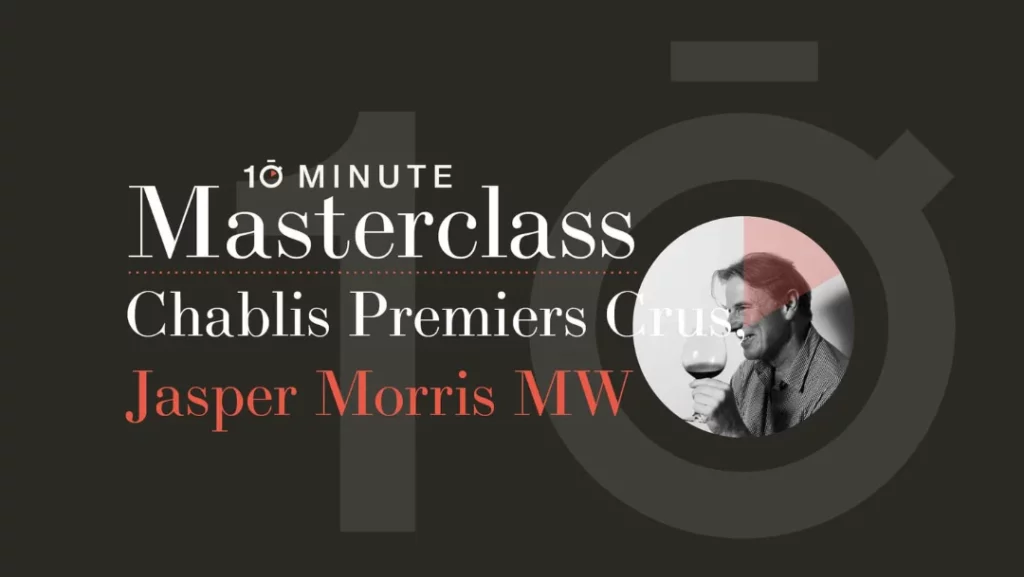The Wine Conversation – Chablis Premiers Crus with Jasper Morris MW & Sarah Kemp

From The Wine Conversation with Sarah Kemp (wine-conversation.com)
“Episode Summary: Jasper Morris MW, author of “Inside Burgundy” and www.insideburgundy.com, takes a deep dive into Chablis premiers crus. He explains that Chablis is based in northern Burgundy in the Yonne département. The river Serein cuts through the limestone plateau, which consists of Portlandian limestone, which is very hard, and is found on slopes that have not eroded much, and Kimmeridgian limestone, which formed when the sea receded, and is full of marine fossils. The best vineyards, Jasper believes, are on Kimmeridgian limestone, which gives Chablis its very particular taste.
The premiers crus appellation was formed after World War II; today there are 41 different premiers crus classified, but you only ever see a few very regularly on the label – the others are subdivisions of the better-known names.
The one big divide, in terms of style and taste, depends on which bank of the river Serein you are on, Jasper points out. “On the left bank, the west side of the river and of Chablis itself, you have rolling hills, the first roll at the southern end gives you a premier cru called Montmains, and the second one gives you Vaillons. Both have plenty of subdivisions, and here you get really steely wines, white fruit style, lots of this marine element, and these are the sorts of wines which are classic with oysters. You also have newer names like Vau de Vey and Côte de Léchet.”
Jasper continues “On the east side, the vineyards are south-west facing, which means they get the afternoon sun, which means they are richer in style, yellow fruit. Here you find Mont de Milieu, Montée de Tonnere, Vaulorent and Fourchaume. These are slightly fleshier wines, which you might want with a river fish or even white meat.”
The style of course depends on how the wines are made as well as the terroir, and Jasper discusses the different use of oak and stainless steel. His favourite premiers crus include Vaucoupin in Chichée, for its steely white fruit character, all the different parts of Vaillons, and, for a richer wine, Montée de Tonerre.
The two most famous wine domaines are Raveneau and Dauvissat, both of whom are expensive on the secondary market, but Jasper advises that, if you’re dining in Chablis, you will find them at reasonable percentage mark-ups. In addition, you have William Fèvre and Samuel Billaud. “There are a lot of people doing a good job you can choose from,” he advises.
Up-and-coming producers he recommends include Roland Lavantureux in the north of the region, Clement Lavallée, discovered earlier this year, who he believes shows real promise, Thomas Ventoura, Fabien of Jean Dauvissat &Fils and Edouard and Eleni Vocoret.
Almost all of Chablis shows good value, he says, “but I do believe that the premiers crus are the sweet spot for quality/price.” Vintages to look out for: 2022 is going to be a first-class vintage, 2020 is a fine year but shows the heat a tiny bit more, 2019 if you want a more voluptuous style, 2017 lovely now and 2014 continues to get better. He recommends leaving the premiers crus five years before drinking them, or even longer.
Jasper’s obscure facts: Chablis also doesn’t just do wine, it is the centre for andouillette. Another fact was that there was a baker in the area who, in 1862, forgot to take his biscuits out of the drying room and found in the morning that they had become shiny, they became the famous Chablis Duché biscuit.”
Listen to the replay:
You can also find Jasper’s guest appearances on other Podcast/Video channels we work closely with:
Bringing Burgundy closer to you with every episode!
Subscribe to my website and get full access to my scores, tasting notes, detailed write-ups on producers and much more.
Daily updates on our Instagram: @jaspermorris.insideburgundy




 NEW TASTING REPORT
NEW TASTING REPORT
 Rippon: T
Rippon: T
